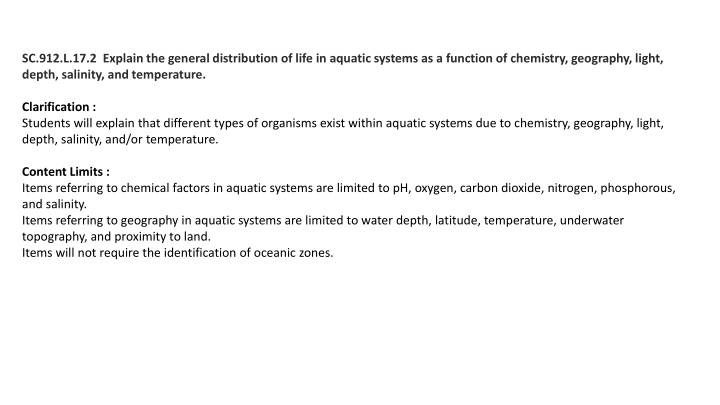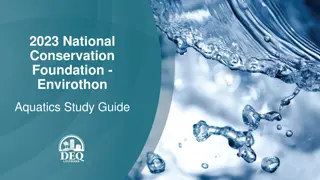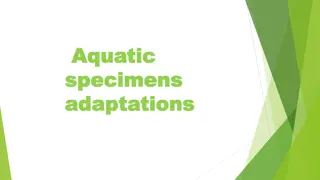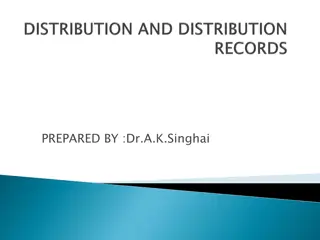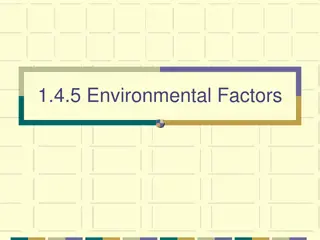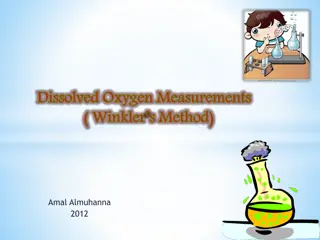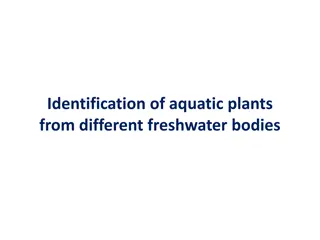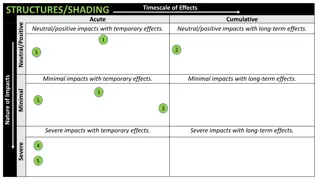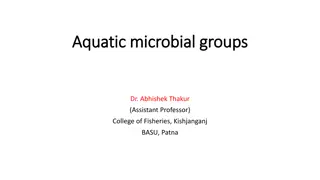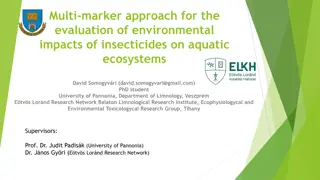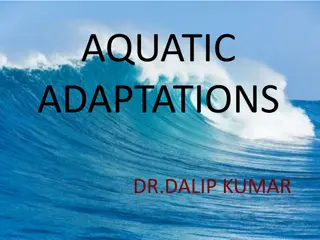Aquatic Systems: Life Distribution Factors
Distribution of life in aquatic systems based on factors such as chemistry, geography, light, depth, salinity, and temperature. Learn about how abiotic factors influence biodiversity and carrying capacity in aquatic environments.
Download Presentation

Please find below an Image/Link to download the presentation.
The content on the website is provided AS IS for your information and personal use only. It may not be sold, licensed, or shared on other websites without obtaining consent from the author.If you encounter any issues during the download, it is possible that the publisher has removed the file from their server.
You are allowed to download the files provided on this website for personal or commercial use, subject to the condition that they are used lawfully. All files are the property of their respective owners.
The content on the website is provided AS IS for your information and personal use only. It may not be sold, licensed, or shared on other websites without obtaining consent from the author.
E N D
Presentation Transcript
SC.912.L.17.2 Explain the general distribution of life in aquatic systems as a function of chemistry, geography, light, depth, salinity, and temperature. Clarification : Students will explain that different types of organisms exist within aquatic systems due to chemistry, geography, light, depth, salinity, and/or temperature. Content Limits : Items referring to chemical factors in aquatic systems are limited to pH, oxygen, carbon dioxide, nitrogen, phosphorous, and salinity. Items referring to geography in aquatic systems are limited to water depth, latitude, temperature, underwater topography, and proximity to land. Items will not require the identification of oceanic zones.
Key Topic The FRAME Routine Chemical Factors is about Main idea Main idea Main idea Main idea Main idea Main idea Salinity Phosphorus So What? (What s important to understand about this?)
Key Topic The FRAME Routine Physical Factors is about Main idea Main idea Main idea Main idea Main idea So What? (What s important to understand about this?)
Extend Understanding Answer these follow up questions: 1. Which factors may contribute to high biodiversity? 2. Which factors may contribute to a decrease in biodiversity? 3. Explain which factors can influence the carrying capacity of a population. 4. Are all of these limiting factors? Explain. OR Research the chemical and physical factors required for an aquatic species of your choosing. Be sure to discuss all factors present on these frames.
Key Topic The FRAME Routine Chemical Factors is about how various abiotic factors affect the distribution of life in aquatic systems Main idea Main idea Main idea pH Carbon Dioxide Oxygen 1. Carbon dioxide reacts with water to form a weak acid called carbonic acid Dissolved Oxygen 2. Impact of the pH of water 3. Ocean Acidification can damage coral reefs Main idea Main idea Main idea Salinity Nitrogen Phosphorus 1. Source= runoff of fertilizers, detergents, animal waste, and sewage 2. Required for plant growth 3. Too much can cause artificial Eutrophication 1. Source= runoff of fertilizers, detergents, animal waste, and sewage 2. Required for plant growth 3. Too much can cause artificial Eutrophication 1. measure of the amount of salt in dissolved water 2. Oceans have a salinity of 35 ppt 3. Fresh water (lakes, rivers) 0.5 ppt 4. Brackish (estuary like Tampa Bay) 0.5 30 ppt So What? (What s important to understand about this?) Each aquatic species (plants and animals) have specific requirements for pH, Oxygen, carbon dioxide, nitrogen, phosphorus, and salinity that must be maintained in order to live and reproduce. Humans can impact these values!
Key Topic The FRAME Routine Physical Factors is about how various abiotic factors affect the distribution of life in aquatic systems Main idea Main idea Main idea Water Depth Latitude Temperature 1. Photic zone=depth of sunlight penetrating water (Higher biodiversity closer to the surface) 1. Affects amount of gasses dissolved in water 2. Colder=more gasses (oxygen/carbon dioxide) 3. As oceans get warmer: Can t hold as much oxygen they release Carbon dioxide into the atmosphere 1. Areas closest to the equator Receive greatest amount of sunlight warmer High biodiversity 2. Pressure increases with depth Main idea Main idea Underwater Topography Proximity to Land 1. Can impact ocean currents 1.Rivers move materials from land to water Nutrients, Sediment, & pollution 2.Human activities are concentrated closest to land 2. Can impact availability of nutrients (upwelling) 3. Can impact temperature (deep sea thermal vents) So What? (What s important to understand about this?) Aquatic species (plants and animals) live in different locations in the world and within bodies of water due to factors like water temperature, available sunlight, proximity to land, underwater topography, latitude, etc.
